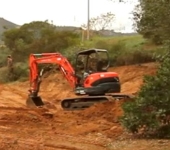
 11
11




14ac Central California foothills, up for collaboration in Central CA

 7
7




Some places need to be wild
 3
3




Moderator, Treatment Free Beekeepers group on Facebook.
https://www.facebook.com/groups/treatmentfreebeekeepers/






 5
5




How Permies works: https://permies.com/wiki/34193/permies-works-links-threads
My projects on Skye: The tree field, Growing and landracing, perennial polycultures, "Don't dream it - be it! "
 2
2




 3
3




14ac Central California foothills, up for collaboration in Central CA
 3
3




14ac Central California foothills, up for collaboration in Central CA
 4
4




 5
5




14ac Central California foothills, up for collaboration in Central CA
 4
4




14ac Central California foothills, up for collaboration in Central CA




John Daley Bendigo, Australia The Enemy of progress is the hope of a perfect plan
Benefits of rainfall collection https://permies.com/t/88043/benefits-rainfall-collection
GOOD DEBT/ BAD DEBT https://permies.com/t/179218/mortgages-good-debt-bad-debt
 2
2




14ac Central California foothills, up for collaboration in Central CA
 2
2




Spero Meliora
 2
2




14ac Central California foothills, up for collaboration in Central CA
 3
3




Jonah Bassman wrote:Alex,
I have a plan, yes!
The berm will be made out of the earth that I'm scooping out as I go "downhill" with digging- the shape of the pond as it is now is not the final shape, and the "higher" edges may end up being simply additional catchment for the pond going downhill. That's why I'm making sure to start by having the upper edge very gradually sloping, so it won't cause erosion. The "bowl" of the pond will not extend to the piles of soil I'm compacting downhill from the pond- the process now is similar to a terrace with regard to moving earth, and I am prepared to build/move the "final" berm to be wherever I need it to be, using the soil I've moved. The variables/what remains to be seen is how much of a berm can be created with the excavated soil, and how much lower on this hill I'll be able to go. I won't be disappointed even if the final area isn't much bigger than what you see now.
I bet this is all very tricky to imagine without showing exactly how it'll be done, hence the thread to share the pictures as I go. :) Bottom line though, nothing is final at this point in terms of the way the earth piled at the lower area looks, or the size of the hole being dug. When I first had the idea for a pond here, I had a more rigid idea of how big it should be, but realized by now that due to this hillside, the size and shape is variable depending on reducing erosion of walls and halting any slippage of bentonite clay.
Spero Meliora
 4
4




14ac Central California foothills, up for collaboration in Central CA
 2
2




Jonah Bassman wrote:I plan to basically see how much volume I end up with after doing everything necessary to make sure the dam wall is securely constructed, so both of those concepts are involved, we'll see how it goes.
That is a great video, I'd actually seen it once before during the early stages of thinking about where to put the first pond, but it was a good time to rewatch! I definitely need to incorporate a core trench for the future dam wall among other things, just a matter of where the "bottom end" of the pond will be.
I agree, I think it'll be a great experiment and I'm already learning more about the land I'm on, at the very least!
Spero Meliora
 4
4




14ac Central California foothills, up for collaboration in Central CA
 2
2




14ac Central California foothills, up for collaboration in Central CA
 3
3




John Daley Bendigo, Australia The Enemy of progress is the hope of a perfect plan
Benefits of rainfall collection https://permies.com/t/88043/benefits-rainfall-collection
GOOD DEBT/ BAD DEBT https://permies.com/t/179218/mortgages-good-debt-bad-debt
 1
1




14ac Central California foothills, up for collaboration in Central CA




John C Daley wrote:I am glad the trees may get a chance.
I dont understand people refusing to change a design to accomodate tress etc.
 6
6




14ac Central California foothills, up for collaboration in Central CA




John Daley Bendigo, Australia The Enemy of progress is the hope of a perfect plan
Benefits of rainfall collection https://permies.com/t/88043/benefits-rainfall-collection
GOOD DEBT/ BAD DEBT https://permies.com/t/179218/mortgages-good-debt-bad-debt
 2
2




14ac Central California foothills, up for collaboration in Central CA
 1
1




In modern times the only right way forward is to come back to nature.
 4
4




14ac Central California foothills, up for collaboration in Central CA












 3
3




How Permies works: https://permies.com/wiki/34193/permies-works-links-threads
My projects on Skye: The tree field, Growing and landracing, perennial polycultures, "Don't dream it - be it! "
 3
3




14ac Central California foothills, up for collaboration in Central CA




Alex Moffitt wrote:https://www.youtube.com/watch?v=AadLCOqalFk
It seams like a great learning experiment in soft engineering!
I will keep watching, Your journey!
Regards,
Alex
Gail Gardner @GrowMap
Small Business Marketing Strategist, lived on an organic farm in SE Oklahoma, but moved where I can plant more trees.

|
Gravity is a harsh mistress. But this tiny ad is pretty easy to deal with:
Learn Permaculture through a little hard work
https://wheaton-labs.com/bootcamp
|


